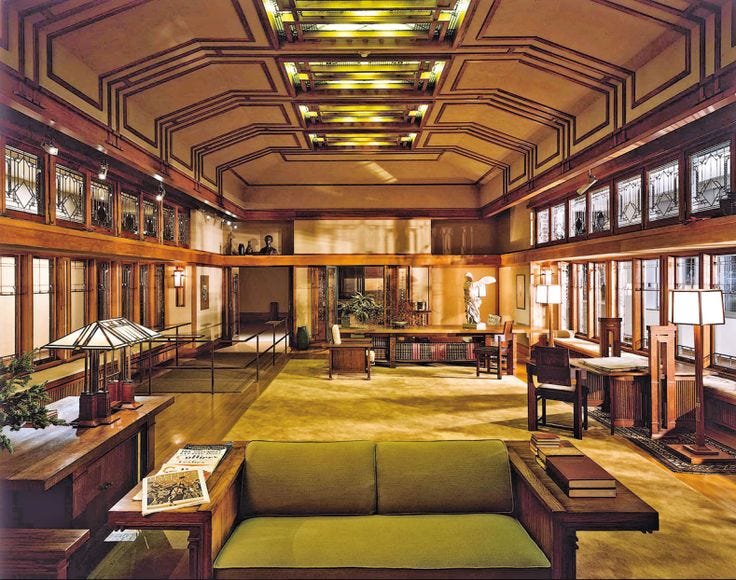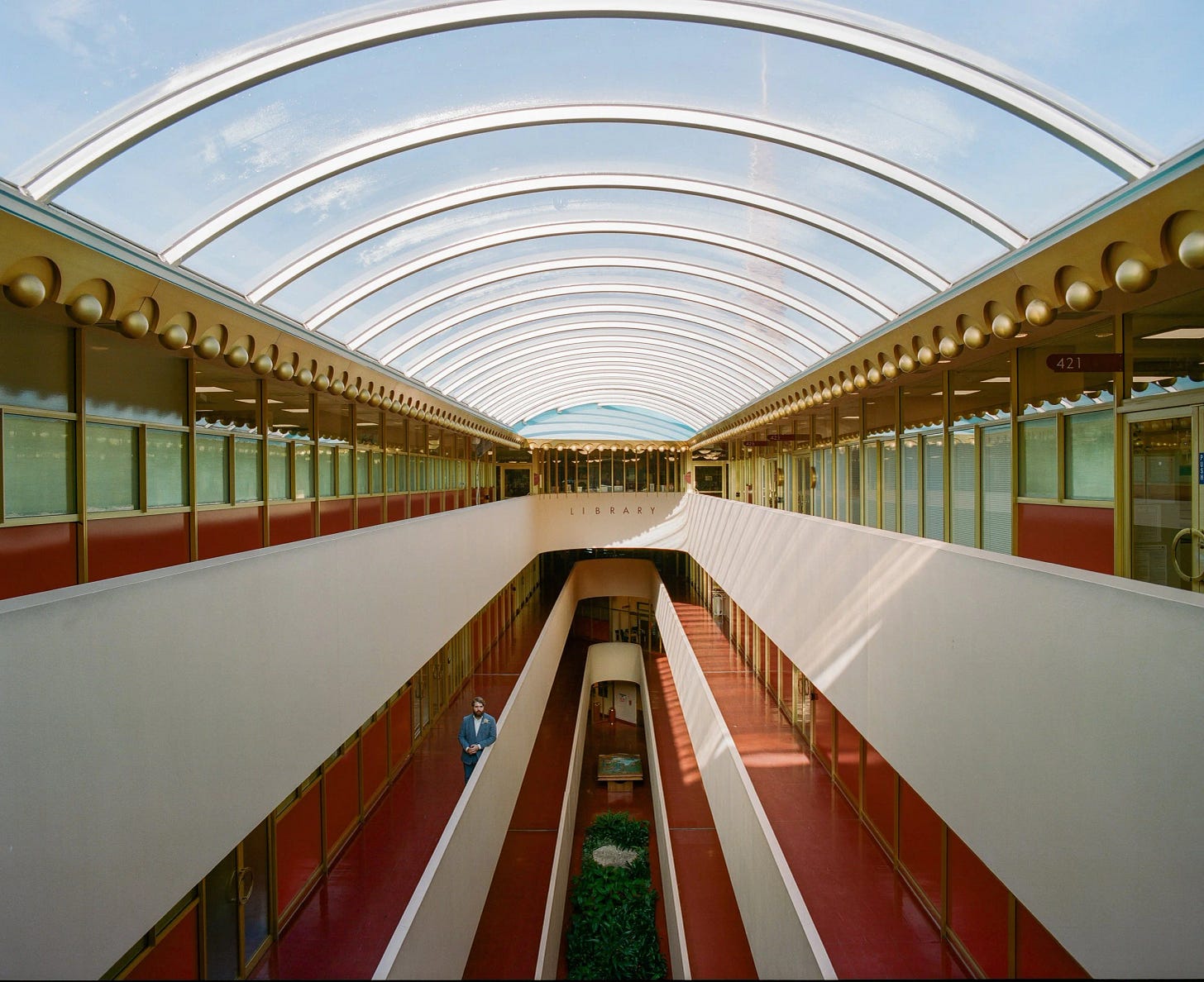Every time I step into a Frank Lloyd Wright house, I’m reminded that his architecture is less about walls and roofs, and more about an experience. Wright didn’t just design homes; he designed a way of living. His philosophy of “organic architecture”—that a building should belong to its site, grow from its materials, and flow with light and nature—is why his work continues to feel so fresh.
What makes Wright prolific isn’t simply the number of projects he designed, but the range of them. He could create soaring icons like Fallingwater, modest and efficient Usonian homes for everyday families, experimental concrete-block houses in California, and deeply personal spaces like the home he designed for his own son in Phoenix. Each one feels completely of its place, and yet instantly recognizable as “Wright.”
I’ve had the privilege of visiting several of his homes, and what strikes me is how different they all feel while still carrying his unmistakable touch. The compression of a low-ceilinged hallway that suddenly releases into a soaring living room. The way windows wrap around a corner to frame the landscape like a moving painting. The constant pull between shelter and openness. Wright’s architecture doesn’t just house you—it choreographs your experience.
For me, that’s why his influence is so enduring. These houses don’t feel like relics of the past. They feel like prototypes of the future, lessons in how we can live more intentionally with our environment, our families, and ourselves. Wright’s designs still challenge us to ask: How do we want to live? How should our homes shape our lives?
Robie House: The Prairie Masterpiece
Standing before the Robie House in Chicago, I could feel Wright’s bold declaration that American architecture didn’t need to mimic Europe—it could be its own thing. The house stretches horizontally, with long rooflines and overhanging eaves, echoing the Midwestern prairies. Inside, the spaces are open and flowing, a radical departure from the boxed-in Victorian rooms of its era.

What I love most is how the Robie House feels at once intimate and expansive. The rows of art glass windows filter light like music across the interior, and the spaces feel like they’re breathing with the outdoors. It’s no wonder this home is considered one of the most important works of modern American architecture—it set the stage for everything from open floor plans to modern suburban design.
Keep reading with a 7-day free trial
Subscribe to SPACES OF MY DREAMS to keep reading this post and get 7 days of free access to the full post archives.


